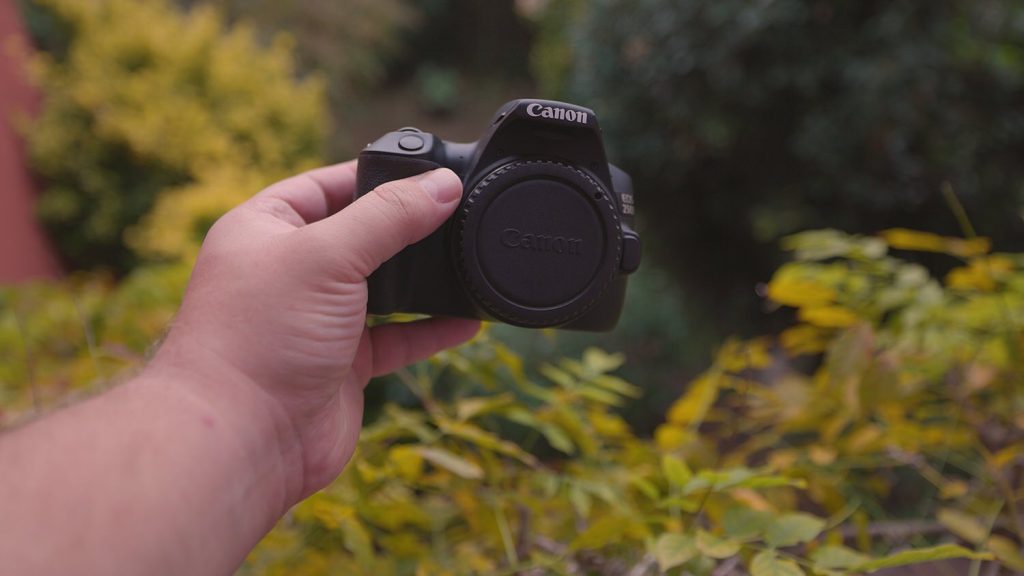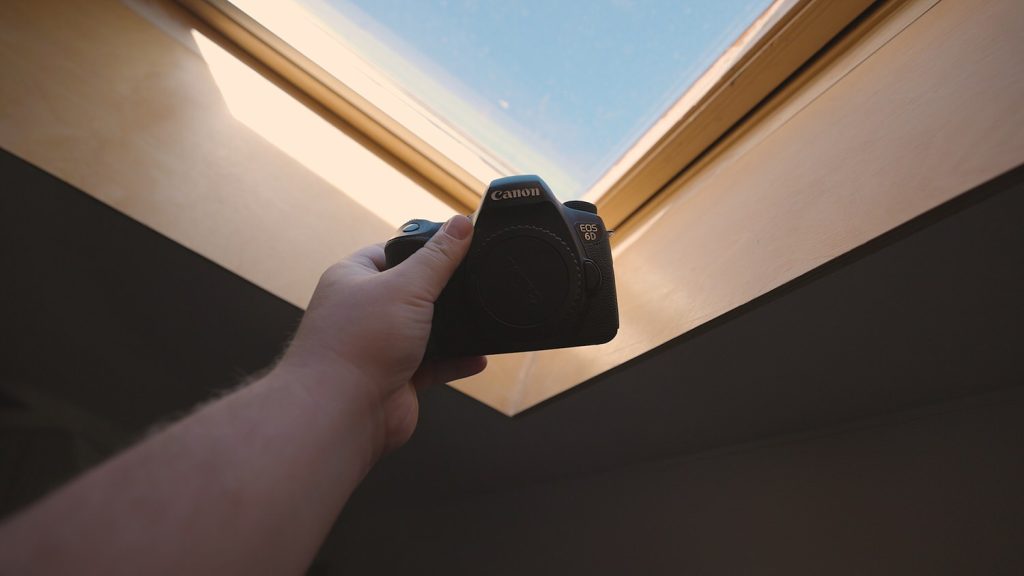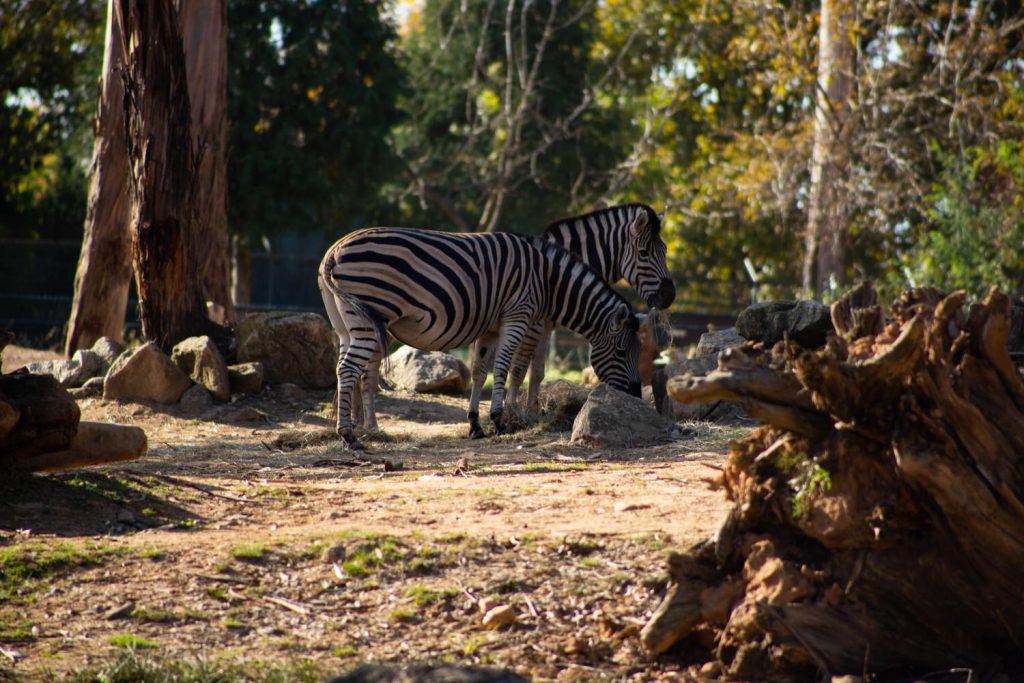Are you undecided between the Canon 6D or the Canon 250D, also known as the Rebel SL3, but you’re not certain if they’re still a good idea to buy in 2023? In this review, we’ll discuss their strengths and weaknesses so you can figure out which one you should buy.

Compatible Lenses
First, you’ll want to know which lenses these cameras work with. It is important to note that both cameras can use varying lenses, but not necessarily the same ones. Let me explain. The Canon 6D can only use EF lenses. For example, the Canon EF 50mm f1.4 or the Canon EF 50mm f1.8.
Unfortunately, it is incompatible with EF-S lenses, like the Canon EF-S 18-55mm kit lens. On the other hand, the Canon 250D can use both EF and EF-S lenses, including more affordable ones such as the Canon EF-S 24mm f2.8 ‘Pancake’ lens. You have a lot of options in terms of third-party lenses as well.
Storage
OK, now what about storage? Do they have a dual SD card slot? No, they don’t. This feature is usually only available on high-end cameras. Its purpose is to provide real-time backups of your photos.
In case one of the SD cards fails, you could still recover your photos from the second SD card. Although SD card failures are rare, having multiple SD cards that you can cycle through over time decreases the possibility of losing data even further. Additionally, if you wish, you can skip the backup feature and use each card individually, resulting in twice as much storage space without fiddling with replacing cards.

Connectivity
Equally important is how they are in terms of connectivity. Both cameras can do Wi-Fi. However, only the 250D can do Bluetooth. On the other hand, when it comes to NFC functionality, the 6D supports it, while the 250D does not.
Size & Build
Expanding on that, is their size an issue? The dimensions of the Canon 6D are 144 x 110.5 x 74.6mm or 5.67 x 4.35 x 2.94″, and its weight is approximately 765 grams or 26.98 oz. In contrast, the Canon 250D measures 122.4 x 92.6 x 69.8mm or 4.82 x 3.65 x 2.75″, and weighs approximately 450 grams or 15.87 oz.
Both cameras are similar in size and are portable and low profile. However, the size can change depending on the type of lenses used with them. I’ve reviewed quite a few lenses on my channel. If you want to see them, click the card in the top right corner or look at the links below.
In terms of build quality, I’d say the 6D wins out by just a bit, with its aluminium alloy and a polycarbonate resin body. On the other hand, the 250D is constructed with a combination of aluminium alloy, polycarbonate resin, and glass fibre.
Now, you might have noticed that the materials listed are quite similar. The reason why the 6D has a superior build, apart from how it feels in the hand, will be addressed later in the review, so make sure to stick around.

Display
Cool, so what about displays? The two cameras come with decent screens at the back, which allow you to navigate menus and view photos.
The screen on the 250D is articulated, meaning it can flip in different directions. This feature makes it possible to use the camera for vlogging, and the screen’s surface can be protected from scratches when carrying the camera in your bag.
However, the 6D has a fixed screen that can’t be moved or turned. You will notice that the 6D has an LCD on the top, which is stylish and convenient for fast access to your settings. While not everyone may appreciate the appearance of this LCD, I find it quite appealing.
Battery Life
So, both of these cameras are quite useful. What should I expect from them in terms of battery life? The 6D comes with an LP-E6 battery that can provide about 1,000 shots. In contrast, the 250D features an LP-E17 battery that can also offer around 1,000 photos.
Various factors, including screen usage, battery age, and ambient temperature, can influence battery life. To be prepared, bringing multiple spare batteries is always wise, particularly if others are participating in the shoot.
Image Quality
Another crucial point to mention is what you should expect regarding image quality. When taking photos, your lens choice is crucial as it will impact the images you capture. However, let’s focus solely on the camera’s contribution. First, let’s talk about the sensors.
Sensors
The Canon 6D comes equipped with a Full Frame CMOS sensor measuring 35.8 x 23.9mm and has a resolution of 20.2 MP. Meanwhile, the 250D features an APS-C sensor measuring 22.3 x 14.9mm with a lower resolution of 24.1 MP. Now, let’s move on to the processors.
Processors
The 6D utilises the DIGIC 5+, while the 250D uses the DIGIC 8. You may wonder what this means. The DIGIC 5 generation introduced a new High-Speed Burst of 10.3 frames per second, Full HD 1080p video, and Intelligent Image Stabilisation.
With the 8th DIGIC generation, several improvements were added. These include better tracking performance, autofocus, enhanced Dual Pixel AF, and 4K @ 30fps videos.
ISO
Regarding ISO, the 6D camera’s range is from 100 to 25,600, with an option to expand it from 50 to 102,800.
Alternatively, the 250D camera can do 100 to 25,600, with up to 51,200 in expanded mode. It is generally advisable to keep the ISO on the lower end whenever possible, as the higher it gets, the more noise it brings to your photos.
Autofocus
Another crucial point is whether they are equipped with Dual Pixel AF. So, the 250D does have it, while the 6D does not. The presence of Dual Pixel AF and a higher number of autofocus points usually means better autofocusing capability, which can be incredibly helpful, especially when something’s happening and you need to take a photo fast.
Regarding autofocus points, the 6D provides a maximum of 11, while the 250D offers only 9.
Shutter Speed
Moving on to a related point, what can they do regarding shutter speed? If you want to capture fast-moving subjects, can these cameras do that? Both cameras have a maximum shutter speed of 1/4000th of a second, which is more than sufficient for most tasks.
So, what if you want to do sports or wildlife photography, and thus you need to take loads of photos one after another? Well, what you’re looking for is continuous shooting mode. The 6D can do 4.5 fps in this mode, while the 250D can do 5 fps.
In other words, the 6D captures 4.5 photos within one second, while the 250D captures five. This is very useful if you aim to capture fast-moving subjects. Within that second, the more frames you can capture, the better the chance you will grab the precise moment you desire.

Video
On a different note, can you use them for video? The 6D model can capture 1080p @ 30fps, and 720p @ 60fps, while the 250D model can do 4K @ 24fps and 1080p @ 60fps. Neither of the two models comes with Canon Log, which is only available on more expensive cameras. The Canon Log feature provides you with a more dynamic range, which effectively allows you to capture more detail in the shadows and the highlights.
As a quick side note, while the 250D can do 4K, it is important to understand that it applies a 1.7x crop to the image. In other words, when filming in 4K, the image will be quite a bit more zoomed in when compared to 1080p.
IBIS
Cool, so do either of these cameras have built-in IS? Nope, neither of these cameras has IBIS. Now, most cameras offer digital stabilisation, but as a general rule, you should avoid that. You may experiment with the in-body digital IS feature if you like; however, it is generally not high-quality.
Additionally, it becomes a part of the video; you cannot have a copy without it. It is not preferable to rely on in-body digital IS. It is always better to film a less steady video and later stabilise it using editing software like Adobe Premiere.
This method’s reliability is further reinforced as editing software has improved with time. To get better optical stabilisation, you can consider buying a lens such as the Canon EF-S 18-55mm kit lens that contains “IS” in the name. It offers in-lens stabilisation, which is more effective than in-camera digital stabilisation.
Vlogging
On a different note, can you use either of these cameras for vlogging? At this point, pretty much any camera can be used for that purpose, but there are a few issues to bear in mind. First, having a flip screen is ideal, so you can see what you’re doing when the camera is turned around. So, the 250D does have one, while the 6D does not.
It is also important to consider the type of sensor your camera has, with the 250D having a cropped APS-C sensor and the 6D having a Full Frame Sensor.
The cropped sensor would produce a more zoomed-in image than a full-frame sensor. As such, you should use lenses with shorter focal lengths when using the 250D for vlogging since many lenses may be too zoomed-in. For handheld vlogging, you can use the 18-55mm kit lens that can be zoomed out completely to capture more of the area.
If you purchase the version with IS, it will provide more stable video, making it ideal in most cases. Another option is the Canon 24mm pancake lens, which can cover a wide range but lacks IS, producing shakier footage.

YouTubers
If you’re thinking of creating content where you can just put your camera on a tripod, then the lenses you need to use would change. The 18-55mm and 24mm lenses might not be right. Instead, consider using the Canon EF 50mm f1.4 or the Canon EF 50mm f1.8.
These two lenses can allow more light in and create beautiful Bokeh, which is that nice blurry background. However, you may not want to use these lenses for handheld vlogging because they are far too zoomed-in and do not have IS.
Longevity
Equally important is how long these cameras will last overall. So, the Canon 6D has dust and moisture resistance sealing, while the Canon 250D has no weather sealing. You need to handle it with caution and guard it against harsh conditions.
Regarding mechanical failure, both cameras have a maximum actuation number of approximately 100,000. This limit is due to the mechanical nature of cameras. After all, they can not go on forever. After a certain number of photos, the mechanism which takes the photos will fail.
Both of these models have a click limit of 100,000. Every time you capture an image, a click is produced, which counts as one actuation. Based on some basic calculations, taking ten photos per day and having a camera with 100,000 actuations can last you up to 27 years.
Assuming you begin with no photos, it’s probable that the camera’s other parts will malfunction before reaching the shutter’s limit. However, the calculation may require tweaking if you purchase the camera used. Before making your purchase, reviewing the listing is important to ensure you know how many pictures have already been taken.
Applications
Right, so what are these cameras good for? Both have been designed for various types of photography, such as portrait, street, product, landscape, event, and documentary. The lens selection is more crucial than the camera for these photography genres. If you’re looking to take sports and wildlife photographs, deciding on the right lens is not the only factor to consider.
A fast shutter speed and many frames per second in continuous mode can be useful. For instance, if you go for the EOS 6D in continuous mode, you can take up to 4.5 shots in a second, while the EOS 250D can do 5 fps. The maximum shutter speed of the 6D is 1/4000th of a second, which the 250D can also do.

Recommendations
I hope this guide has been helpful to you. What I do here is help people achieve their dream of being geographically independent by earning their living online from anywhere. To do this, I teach people how to be better freelancers, and I also show them the tools required, such as cameras and lenses, and audio equipment. Alternatively, if you prefer video reviews, feel free to have a look at my YouTube channel.
Finally, down below, you will find all of the items I talked about in this article.



